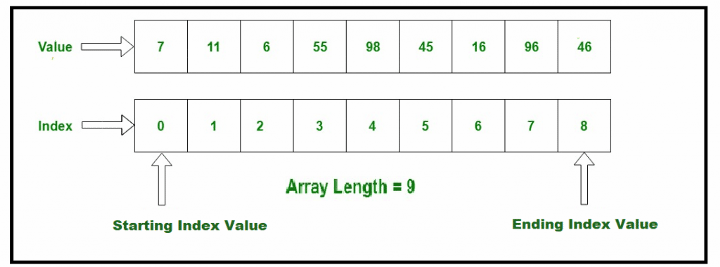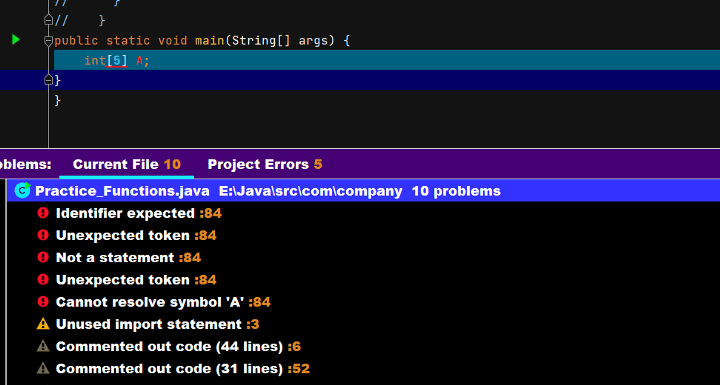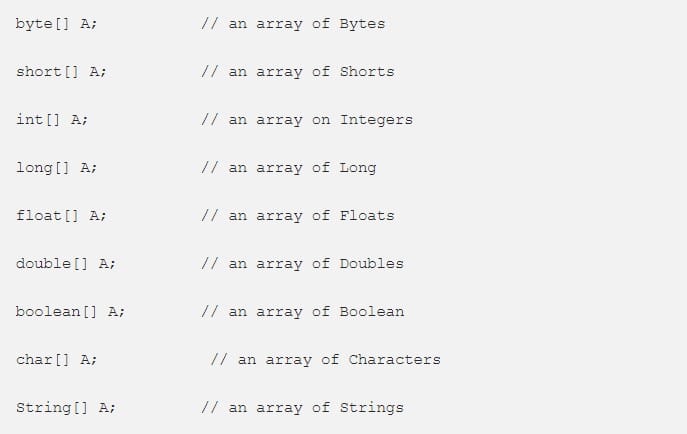Java arrays are similar to arrays in other programming languages in that they allow us to hold a large number of items of the equivalent kind in RAM in a linear fashion. It behaves like any other array, with the exception that in Java, it can be defined as an entity that contains items of a similar data type and a defined size. Declaring an array allows us to save time by avoiding the need to declare and initialize each individual value that will be stored in the array.
Let’s look at an example in order to comprehend the aforesaid sentence. Consider a class with 100 pupils, the names of whom we would want to enter into our database for future reference. Using 100 independently declared and initialized variables of data type “string” is one option. The most efficient solution is to compile all the identities into a single set of dimension 100 and the identical data type.
The first will take a long time and be tedious, while the latter is far more efficient since no time is lost and all the variables are stated and saved at the beginning of the procedure.
Indexing of Arrays in Java
Most computer languages, Java inclusive, use a zero-based indexing system for arrays, which indexes elements from 0 to one fewer than the array’s size or length. Elements are the individual items in an array, and their position in the array is used as the index to get that element. Indexing starts from 0 and finishes at 8, which is 1 lower than its length, as indicated in the figure.
Declaring Arrays in Java
To define an array in Java, we may do it in one of two methods. The syntax for defining a Java array as well as a variable is exactly the same. They must both have data types that inform the JVM what kinds of entries would be saved, and they may have whatever title we choose as long as it complies with Java’s naming conventions for variables.
The empty brackets above indicate that the variable stores an array whose length has not yet been decided; in this case, the length is an indeterminate int array.
The Java compiler would generate an objection if we try to specify the length of the array during the definition phase. A declaration doesn’t actually build an array; rather, it creates a connection to an existing array and informs the compiler that the variable in question will store an array of the given type. Allocating a fresh array of the equivalent type and assigning it to typeArray is the only way to connect this Array to the underlying physical array.
The first syntax, int[] A;, is widely used since it is comparable in appearance and readability to the syntax employed when defining a variable, as well as the empty brackets, identify the array kind and therefore should occur with the type name. It’s not only int that may be used to define arrays; there are additional data types that work in the same way.







